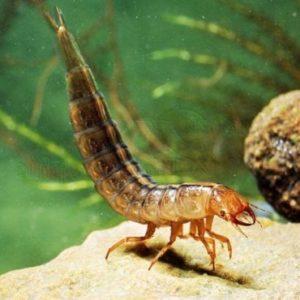Swimmer broadest: a rare, beautiful, waterfowl beetle
Swimming beetles are widespread in many countries and are famous for not only managing to adapt to life under water, but also occupying a niche of active predators. These are very interesting and unique insects, but unfortunately one of the brightest representatives of this family is close to extinction.
Content
Swimmer the widest: photo
Who is a wide swimmer
Name: Swimmer wide
Latin: Dytiscus latissimusClass: Insects - Insecta
Squad: Coleoptera - Coleoptera
Family: Sawflies – Dytisciday
 | Habitats: | stagnant ponds with vegetation |
 | Dangerous for: | fry, crustaceans |
 | Means of destruction: | needs protection |
The broad swimmers are also called the broadest swimmers. It is one of the largest species in the family swimmers and the abundance of this species causes serious concern among environmentalists.
What does a wide swimmer look like
The length of an adult beetle can reach 36-45 mm. The body is very wide and considerably flattened. The main color is dark brown with a greenish tinge. A distinctive feature of this species is also a wide yellow border running along the edges of the elytra and pronotum.
Like many other members of this family, wide swimmers fly well. Their wings are well developed and at dusk they can fly to a source of bright light. The middle and hind pairs of legs of the beetle are swimming and do an excellent job of their function.
Large swimmer larva
The larvae of this species look just as spectacular as the adults. Their body length can reach 6-8 cm. On the head there is a pair of powerful crescent-shaped jaws and two compound eyes. The organs of vision of the larvae of this species are much better developed than those of adults, which allows them to “look out” for prey in the water column.
The body of the larva itself is round and oblong. The extreme segment of the abdomen is significantly narrowed and equipped with two needle-like processes. All three pairs of legs and the end of the abdomen of the larvae are densely covered with hairs that help them swim.
Lifestyle of a broad swimmer
Adult beetles and larvae of this species lead a predatory lifestyle and spend almost all the time under water. The only exceptions are rare flights of adult beetles, if necessary, relocation to another body of water. The diet at all stages of beetle development consists of:
- tadpoles;
- fry;
- larvae of caddisflies;
- shellfish;
- worms;
- crustaceans.
Widespread swimmer habitat
Wide swimmers prefer large bodies of water with stagnant water and well-developed vegetation. Usually these are lakes or river beds. The range of these insects is limited to the countries of Central and Northern Europe, such as:
- Austria;
- Belgium;
- Bosnia and Herzegovina;
- Czech;
- Denmark;
- Finland;
- Italy;
- Latvia;
- Norway;
- Poland;
- Russia;
- Ukraine.
Conservation status of the broad swimmer
The number of beetles of this species is constantly decreasing and in many countries it is already considered extinct. At the moment, the broad swimmer is included in the International Red Book and belongs to the category "Vulnerable species".
Conclusion
Every year the number of many species of animals is declining and the main reasons for this are natural selection and human activities. Fortunately, modern society is gradually becoming more responsible for its actions and is taking all possible measures to preserve and increase the number of individuals belonging to vulnerable species.
Previous
